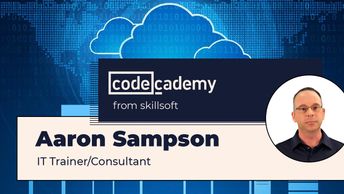With a range from 0 to 65535 split across three groups (those reserved for TCP/IP applications, registered ports, and dynamic ports), differentiating port numbers can be confusing. In this course, you'll learn how to identify and use the most common registered ports.
You'll examine port 1433, reserved for Structured Query Language (SQL) Server and when to use SQLnet port 1521, Remote Desktop Protocol (RDP) port 3306, and port 5060/5061, reserved for the Session Initiation Protocol (SIP).
You'll then outline how IP protocols are used to facilitate Internet Protocol (IP) communication, such as Transmission Control Protocol (TCP), User Datagram Protocol (UDP), Internet Control Message Protocol (ICMP), and Gateway Routing Encapsulation (GRE).
Lastly, you'll examine connectionless and connection-oriented services, two data transmission services used to establish and terminate connections, exploring how they behave at the network and transport layers of the OSI model.
| Objectives |
|---|
CompTIA Network+ N10-008: Registered Ports
|


